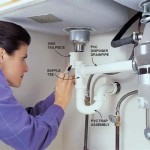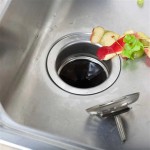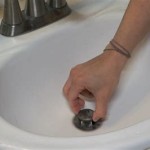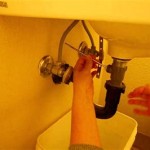How To Fix a Sink Plug
A malfunctioning sink plug can be a source of frustration and inconvenience. A sink that refuses to hold water or one that drains continuously wastes water and can lead to plumbing issues. Addressing the problem promptly can save water and prevent potential damage. This article provides guidance on diagnosing and resolving common sink plug issues.
Identifying the Problem
Before attempting any repairs, it is essential to accurately identify the root cause of the issue. Sink plug problems can stem from a variety of factors, ranging from simple obstructions to more complex mechanical failures. Careful observation and a systematic approach will help pinpoint the specific problem.
Begin by visually inspecting the sink plug and its surrounding area. Check for any visible debris, such as hair, soap scum, or food particles, that may be obstructing the plug's ability to seal properly. Pay close attention to the drain opening itself, ensuring that it is free from any buildup or blockages.
Next, examine the sink plug mechanism, which is typically located beneath the sink. This mechanism consists of a series of levers, rods, and pivots that control the raising and lowering of the plug. Check for any signs of damage, corrosion, or misalignment. Loose connections or broken components can prevent the plug from functioning correctly.
Consider the symptoms being exhibited by the sink plug. Is the plug not sealing properly, allowing water to drain slowly or continuously? Or is the plug stuck in the closed position, preventing water from draining at all? The specific symptoms can provide valuable clues about the underlying cause of the problem.
If the sink has an overflow drain, inspect it for any obstructions. A clogged overflow drain can prevent the sink from draining properly, even if the plug itself is functioning correctly. Use a small brush or pipe cleaner to remove any debris from the overflow drain opening.
In some cases, the problem may not be immediately apparent. In such situations, it may be necessary to perform some basic troubleshooting steps. For example, try manually manipulating the sink plug mechanism to see if it is possible to unstick a stuck plug or improve a poor seal. If this is successful, it may indicate a problem with the linkage or pivot points.
Once the problem has been identified, it’s possible to determine the appropriate course of action. Simple problems, such as debris obstructing the plug, may be easily resolved with a quick cleaning. More complex problems, such as damaged components, may require more extensive repairs or replacement parts.
Cleaning and Clearing Obstructions
One of the most frequent causes of sink plug problems is the accumulation of debris around the plug and in the drain. Hair, soap scum, and food particles can build up over time, preventing the plug from sealing properly or obstructing the flow of water. Regularly cleaning the sink plug and drain can help prevent these problems.
To clean the sink plug, start by removing it from the drain opening. Use a damp cloth or sponge to wipe away any visible debris from the plug's surface. Pay particular attention to the underside of the plug, where debris often accumulates.
Next, clean the drain opening using a small brush or pipe cleaner. Scrub the inside of the drain to remove any buildup of soap scum or other debris. Rinse the drain with hot water to flush away any remaining particles.
For stubborn clogs, a mixture of baking soda and vinegar can be used. Pour about half a cup of baking soda down the drain, followed by half a cup of vinegar. Allow the mixture to fizz for about 30 minutes, then flush the drain with hot water. This can help dissolve grease and other organic matter that may be contributing to the clog.
If the clog is located deeper in the drainpipe, a plunger may be necessary. Fill the sink with enough water to cover the cup of the plunger. Place the plunger over the drain opening and push and pull vigorously to create suction. Repeat this process several times to dislodge the clog.
In some cases, a drain snake or auger may be needed to remove particularly stubborn clogs. Insert the snake into the drain opening and rotate it to break up or retrieve the clog. Be careful not to damage the drainpipe while using the snake.
After cleaning the sink plug and drain, reassemble the components and test the plug's functionality. If the plug is now sealing properly and the water is draining smoothly, the problem has been resolved. If the problem persists, further troubleshooting may be necessary.
Regular cleaning is a preventative measure. A consistent routine can minimize the likelihood of debris-related issues and extend the lifespan of the sink plug and drain components.
Adjusting or Replacing Sink Plug Components
When cleaning and clearing obstructions does not resolve the sink plug issue, the problem may lie within the mechanical components of the sink plug mechanism. This mechanism, typically located beneath the sink, controls the raising and lowering of the plug. Common problems include loose connections, misaligned components, and damaged parts. Depending on the nature of the problem, adjusting or replacing these components may be necessary.
Begin by inspecting the linkage between the sink plug and the pop-up rod. This linkage consists of a series of levers, rods, and pivots that connect the rod to the plug. Check for any loose connections, bent rods, or worn pivot points. Tighten any loose screws or nuts, and straighten any bent rods using pliers.
If the linkage is misaligned, adjust the position of the various components to ensure that they are properly aligned. This may involve loosening screws or nuts, repositioning the components, and then retightening the fasteners. Make sure that the linkage moves freely and smoothly without binding or catching.
Sometimes, the pop-up rod itself may be the source of the problem. Check the rod for any signs of damage, such as bending or corrosion. If the rod is bent, straighten it or replace it with a new one. If the rod is corroded, clean it with a wire brush or steel wool, and then lubricate it with a silicone-based lubricant.
The pivot points on the linkage are particularly susceptible to wear and tear. Over time, these pivot points can become worn or corroded, causing the linkage to bind or fail. Lubricate the pivot points with a silicone-based lubricant to reduce friction and improve their performance. If the pivot points are severely worn, replace them with new ones.
In some cases, the entire sink plug mechanism may need to be replaced. This is often necessary if the mechanism is severely damaged or corroded, or if individual components are no longer available. Replacement sink plug mechanisms are available at most hardware stores and home improvement centers.
When replacing the sink plug mechanism, carefully follow the manufacturer's instructions. Disconnect the old mechanism from the sink plug and pop-up rod. Install the new mechanism in its place, ensuring that all connections are secure and properly aligned. Test the new mechanism to ensure that it is functioning correctly.
When working with plumbing components, it is important to exercise caution and avoid over-tightening fasteners. Over-tightening can damage the components or strip the threads. Use a wrench or pliers to tighten fasteners snugly, but avoid applying excessive force. If unsure, consult a qualified plumber.
Choosing high-quality replacement parts is important to ensure the longevity and reliability of the repair. Opt for parts made from durable materials, such as brass or stainless steel, that are resistant to corrosion and wear. Read product reviews and consider recommendations from trusted sources when selecting replacement parts.
Proper installation is crucial for the correct functioning of the sink plug mechanism. Ensure all connections are tight and properly aligned. A poorly installed mechanism can lead to leaks or other problems, potentially causing damage to surrounding areas.

How To Replace A Sink Stopper Quick And Simple Home Repair

Bathroom Sink Drain Stopper Not Working

In My Sink Pop Up Stopper The Tip Of Pivot Rod Is Broken How Do I Fix It Home Improvement Stack Exchange

How To Fix A Stuck Sink Stopper Fast Easy Diy Solutions

How To Fix A Leaking Kitchen Sink Basket Strainer Plug

How Do I Fix A Stuck Push Down Sink Plug 4 Ways To Free Pop Up

How To Fix Pop Up Drain Waste Plug

How To Fix A Stuck Sink Stopper Fast Easy Diy Solutions

Quick Tip 26 Pop Up Stopper Sticks Misterfix It Com

How To Adjust A Bathroom Sink Pop Up Drain 1 Tom Plumber







